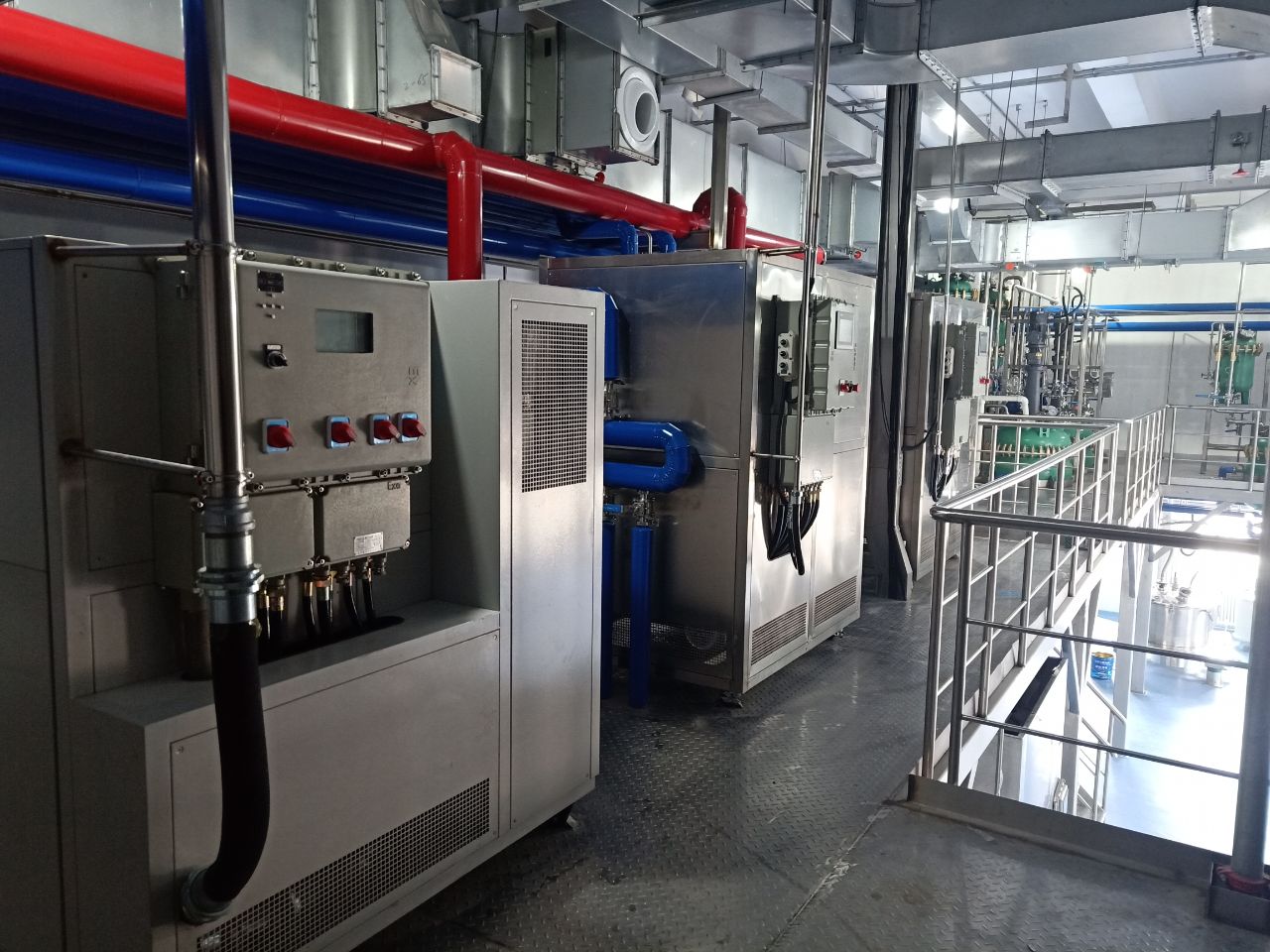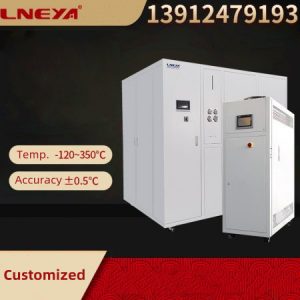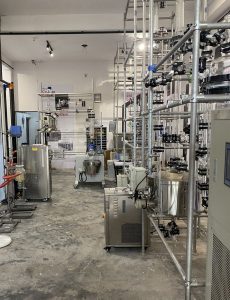화학 및 제약 반응기에서 온도 제어 시스템 TCU의 역할
The temperature control of the reaction kettle in drug research and development and chemical experiments, as well as the temperature control in small-scale experimental production and industrial production processes, require highly dynamic temperature control systems. When controlling the temperature of the reaction kettle, it is necessary to quickly and efficiently compensate for the absorption and exotherm of the chemical reaction.
Many reactors mix or chemically react materials, often accompanied by exothermic or endothermic processes. This part of heat needs to be balanced by a device to maintain a certain temperature range to ensure normal production. ,
Reactor temperature control requires different heating and cooling rates according to different reaction material characteristics. The working environment of some reactors has special requirements, which affects temperature control. How to accurately control the temperature of the reactor needs to be on site Understand the process conditions, such as explosion-proof treatment, or the control part is separated from the mechanical part.
Most temperature control applications involve stainless steel and glass reactors. The stainless steel reaction kettle is more durable, while the glass reaction kettle allows users to observe the reaction process in the kettle body. The reaction kettle generally has an internal cavity, and the materials to be temperature controlled are placed in this cavity. The internal cavity is surrounded by a jacket through which heat transfer oil can pass. The temperature control system is connected to the jacket of the reactor. In order to control the temperature of the reaction kettle, the temperature control system continuously drives the heat transfer oil into the jacket of the reaction kettle through the circulation pump. The sudden temperature change inside the reactor will be compensated by the rapid heating and cooling of the temperature control equipment to achieve dynamic balance. The thermal oil is heated and cooled in the temperature control equipment.
The LNEYA reaction kettle temperature controller TCU uses concentrated heat energy in the kettle to control the temperature of the process, ensuring that only one type of thermally conductive liquid flows into the jacket of the reaction vessel, reducing the problem of thermal reaction delay. Through three-point temperature sampling (material temperature point, temperature control system outlet and inlet temperature), there is no built-in expansion tank, which ensures that the heat absorption and heat release process will not affect the efficiency of the heat transfer oil. Due to the special type of the production workshop, we accept the customization of explosion-proof models, just need to tell us the temperature control effect you want to achieve.
관련 권장 사항
-
What are the conditions for the decarboxylation reaction? How to control the temperature of heating?
1241The decarboxylation of aromatic acids is easier than that of fatty acids. For example, benzoic acid can be decarboxylated by adding a little copper powder as a catalyst in quinoline solution and heating. When a strong electron-withdrawing group i...
세부 정보 보기 -
Reactor Heating Circulator Related Instructions
1099Currently, reactor heating circulators are used more in the chemical industry. So, what do users need to pay attention to after purchasing? With the development of society, the process level of reactor heating circulators is becoming more and more...
세부 정보 보기 -
What should be paid attention to in the reaction kettle nitric acid cooling system?
998After purchasing the nitric acid cooling system of the reactor, many users often do not notice the details that need to be paid attention to when the equipment is turned on. It is necessary to check whether there are few pieces of the product, wh...
세부 정보 보기 -
공정 엔지니어링에서 동적 온도 제어 시스템의 온도 제어
949화학 산업, 특히 공정 엔지니어링에서는 많은 공정이 온도에 묶여 있거나 특정 온도 제어 애플리케이션에 의해 지원될 수 있으므로 효율성이 높아집니다. 후자의 예로는 연속 온도 제어가 있습니다.
세부 정보 보기
 LNEYA 산업용 냉각기 제조업체 공급 업체
LNEYA 산업용 냉각기 제조업체 공급 업체













